-
*Astrella.
User deleted
Epona, la dea dei cavalli - ENG
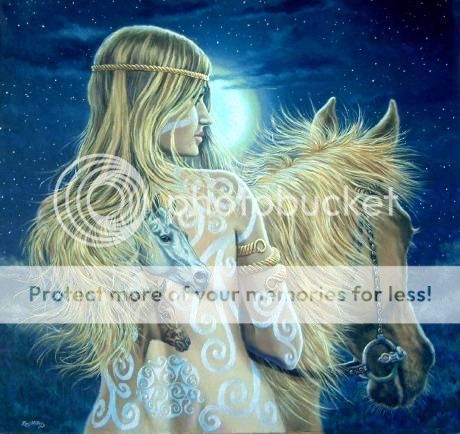
Epona, la dea protettrice degli equini in generale e dei cavalli in particolare, deriva il suo nome dalla lingua gallica "ekwos", poi adottato dal linguaggio e dalla cultura celtica in cui aveva il significato di "equus", cavallo.
Unica divinità celtica ad essere venerata in tutto l'Impero Romano tra il I ed il III secolo a.C., divenne una divinità tutelare dei Romani attraendo un gran gruppo di adoratori tra la società celtico-romana. Iscrizioni divinatorie dedicate ad Epona in Greco, Latino e Germanico vennero rinvenute in tutti i territori dell'Impero, dove spesso veniva indicata con il nome romanizzato Epona Augusta: i romani le dedicarono anche un giorno, il 18 dicembre, nel quale con riti e feste celebravano la sua grandezza.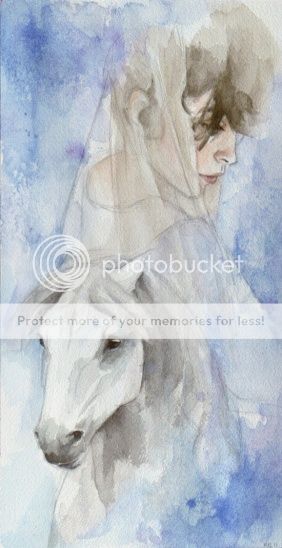
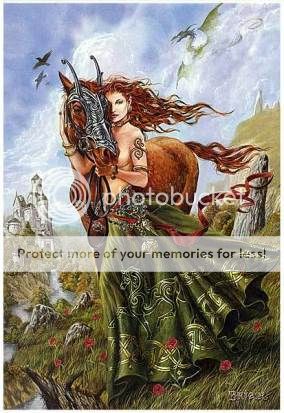
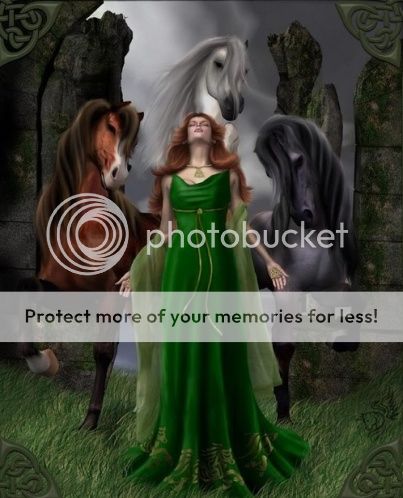
Le sculture dedicate ad Epona la raffigurano sempre accompagnata da uno o più cavalli, seduta su uno di essi o circondata da giumente e puledri, spesso con un cesto di grano in grembo: per questo, oltre che protettrice di questi animali, Epona impersonò la dea del raccolto, della fertilità e dell'abbondanza. Queste statue venivano collocate generalmente accanto ad antiche stalle, allevamenti e spazi dedicati all'allenamento.
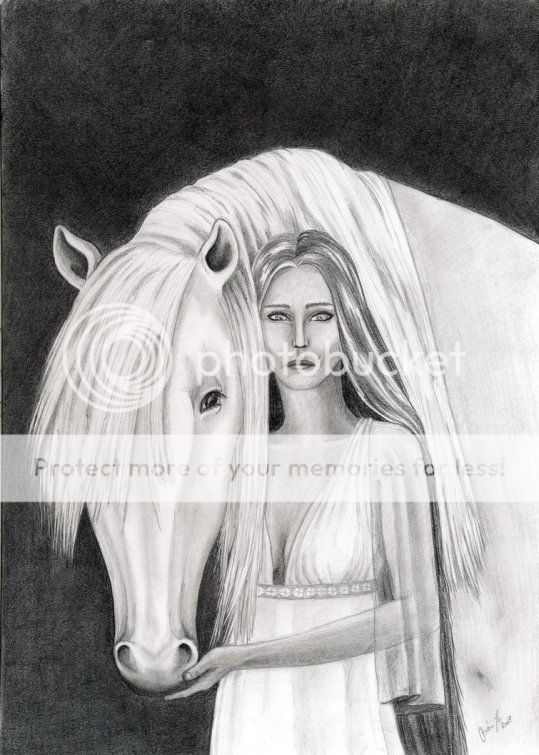
La sua importanza nella cultura romano-celtica aumentò quando venne riconosciuta come protettrice dei cavalieri che vigilavano sull'Impero con l'ulteriore compito di accompagnare l'anima dei morti attraverso l'aldilà, trasportandole a cavallo oltre gli abissi dell'oceano spalancando loro le porte dell'Altroregno. Grazie a questa rappresentazione della dea, Epona venne adorata sia dai vivi sia dai morti, simboleggiando la guardiana dell'inizio e della fine della vita sulla terra.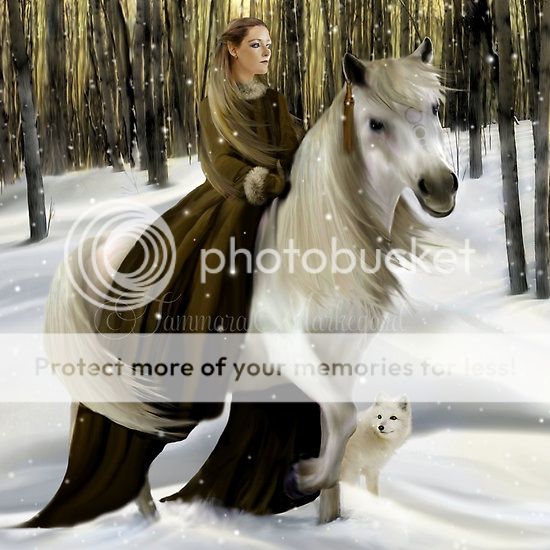
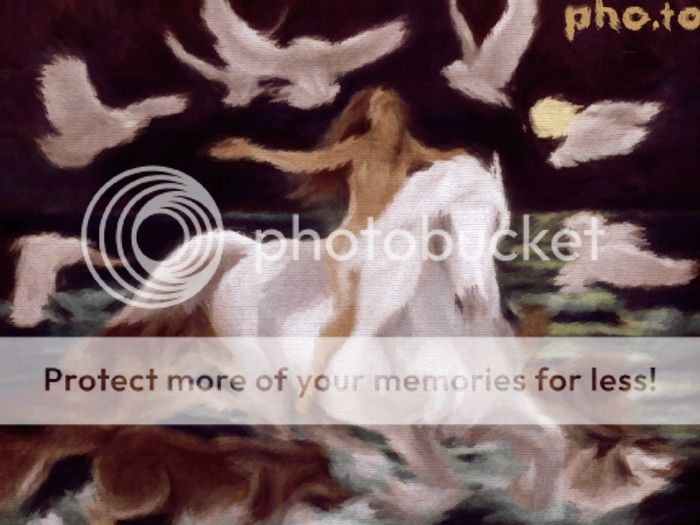
Nella società celtica Epona fondeva in sé la virilità e la potenza del cavallo ai poteri generativi e spirituali delle dee Madri della fertilità.
Inoltre l cavallo già di per sé aveva una duplice valenza: essere nobile, intelligente ed affascinante ma anche simbolo dell'istinto puro e quindi incontrollabile.
Il cavallo è legato ad Epona in tutte le sue manifestazioni, sia nel suo aspetto luminoso, sia in quello tenebroso e sotterraneo; questa doppia valenza si legava al culto della dea per accompagnarla nell'aldilà come animale che abitava gli inferi, retaggio derivato dalla mitologia greca, che sorgendo dalle tenebre portava con sé la morte terminando la sua corsa come cavallo alato una volta raggiunti i cancelli dell'Aldilà.
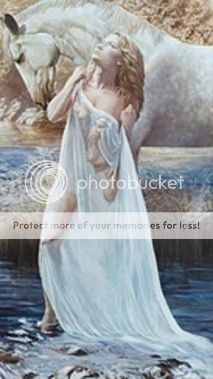
Nella mitologia il cavallo è una guida per l'uomo nei luminosi mondi spirituali degli dèi, tramite tra il regno terrestre e quello spirituale, ma anche viatico nelle oscure regioni accessibili attraverso il sogno. Il suo principale dono è quello di prevedere il futuro, poiché come conoscitore dei misteri dell'Altroregno con l'istinto comprende ciò che l'occhio umano non sa distinguere e vedere, salvando gli uomini dai pericoli. È perciò una guida, un mezzo di trasporto fra i mondi, viaggiatore tra il regno terrestre e quello spirituale.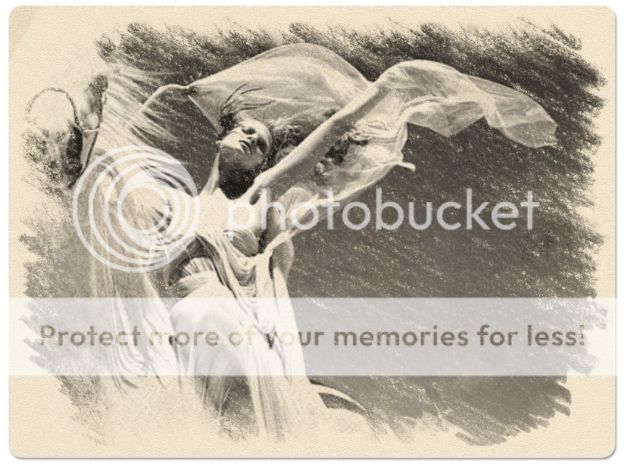
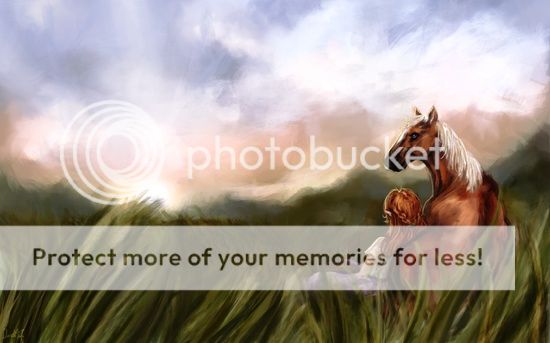

Spesso viene associato al fuoco e all’acqua - le due porte sui mondi dell’Aldilà -, alla vita e alla morte, incarnando in sé lo spirito del grano come già Epona la sua guardiana conferendo ad esso i poteri della fecondità della terra e della sessualità, della vegetazione e del suo rinnovamento periodico, della vita attraverso la morte, dei cicli vitali legati alla luna e alle acque, dei poteri del sogno, della divinazione, ma anche i caratteri luminosi dell’eroismo e la nobiltà.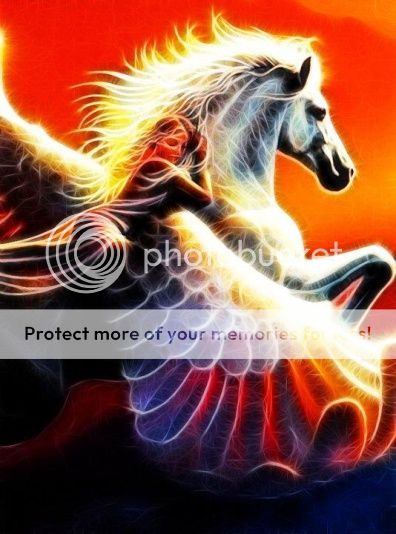
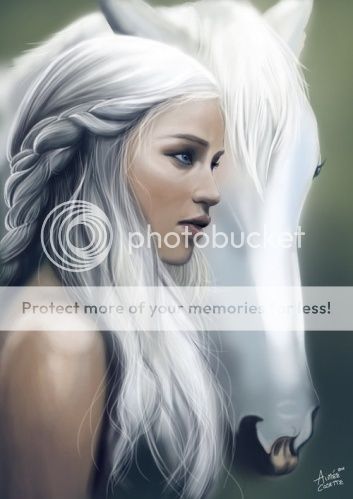
Fonte: www.ethnos.biz/gioielli-etnici/simboli_epona.htm
English.The goddess Epona
Epona was a Celtic goddess. Her name contains an allusion to the horse: in Celtic, "epos" means “horse” and the suffix “-ona” affixed simply means “on”. Epona is the patron goddess of mares and foals.
The oldest information about the Gallic goddess of horses is found in Juvenal (Satires, VIII, 155 ff). He writes: “... iurat / solam Eponam and facies olida ad praesepia pictas”. We can also found another text mentioning Epona in Minucius Felix (Octavianus, XXVII, 7): “Nisi quod vos et totos asinos in stabulis cum vestro vel [sua] Epona consecratis.”
The known inscriptions about Epona were excavated all around the territories corresponding to the ancient Gaul and Germany, but also on the Danubian provinces, and even at Rome. The many inscriptions are often signed by soldiers, and found close to settlements, which seems to mean that the inscriptions reveal, especially in the East, not an indigenous cult, but a military cult.
Epona occupied an important place in the Gallic religion, because the horse itself was important in the life of the Gauls. We can remember how the Gallic cavalry had destabilized the Roman legions during the Conquest. The veneration of the goddess logically then persisted in the army. Yet everything suggests that the common people adored her in rural areas. There remains unfortunately almost no trace of an official cult of Epona in large cities (but this makes sense).
Epona’s appearance varies in function of the origin of each representation. With few exceptions, Epona is always dressed and draped in the presence of horses. Apart from these animals, she is shown alone, sometimes depicted as celibate. While these features are found on all depictions, positions and attitudes of Epona and her horses vary depending on where they were found.
The first type of representation, found in north-eastern Gaul and in the Rhine region, shows the goddess seated on a mare, sometimes accompanied by a foal. Carried by a horse, she can have be funerary symbol: on some steles, it’s clear that she evokes the journey of the soul to the hells (the representation of a woman to symbolize the soul of the deceased is consistent with folklore of ancient religions).
In the second type of representation, the goddess is surrounded by horses (which she sometimes feeds). Such representations are found mostly in central Gaul.
There is yet another way to represent Epona: she may be lying on a horse, half-naked (as found in Allerey, Burgundy).
Her attributes are usually the cornucopia or peg. She is sometimes accompanied by a dog and is sometimes accompanied by gods, goddesses or spirits (local Mars, Hercules, or Silvanus depictions are frequently found).
When we have to study a Celtic deity, it is often useful to compare it with what is known of the Celtic tradition which has left mythological writings in Ireland. Even though the recording of mythological Celtic Ireland (and Wales) started at the beginning of the Middle Ages, and applies mainly to the British Isles, but it is sometimes useful to try to establish links with the old Celtic traditions in which these stories come from.
Epona is often closer to the goddess Rhiannon Cymric (the name derives from a Celtic word “Rigantona” meaning “great queen”) appearing in the Mabinogi of Pwyll. In this kind of Arthurian romance, it is said that it was impossible to catch her when she rode on horseback, as she made her hurry; she entertained guests at Harddlech singing at meals. Rhiannon was married with Pwyll and Manawyddan. She may also have had a function to accompany the dead.
There are certainly similarities between Epona and Rhiannon, such as their attachments to horses, their role as accompanist for dead, but there are also differences in size: the goddess Epona was single, while Rhiannon, seen as a queen, was married. Also, Epona was especially adored by the limes while Rhiannon existed in Celtic literature (especially so in Britain). Thus, if there are undeniable similarities between the two characters, it would be wiser not to equate them completely.
Link: www.ancient.eu.com/article/153/.
Epona, la dea dei cavalli - ENG8 Aprile 2013 |


